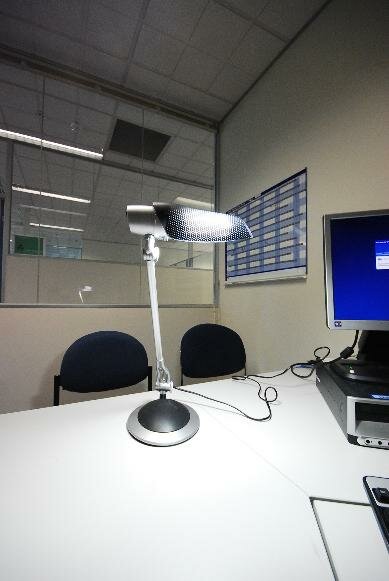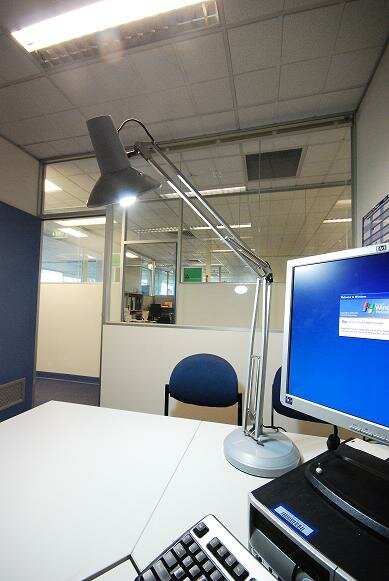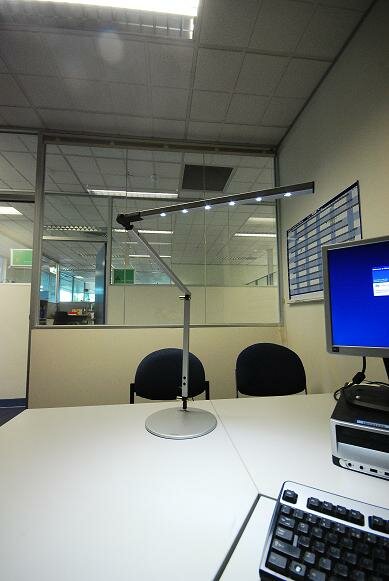The Challenges of Task Lights
January 16th, 2009 at 10:29Task lights achieve reductions of up to 75% in office lighting energy consumption and CO2 production! They give us control over the lighting in our environment, and allow us to switch them off when away from our desks.
Down at Hobsons Bay city council, the passionate environmental officer Rowena Joske and I are wading our way through the murky swamp that is task lights. I say murky because of the lack of online resources, lack of task lighting examples in Melbourne, and the question of how staff receive the alterations to their day in day out, office environment. To get to the bottom of task lights we have started a trial of around 25 desks.
For our trial we have identified four different styles of task lights which range in cost, light source, illumination level, and functionality. The lights have been swapped between the staff and feedback has been sort.
In my view, the success of task lighting comes down to finely balancing a number of elements. Namely:
Standards – Ensuring minimum required illumination levels are met. Continual measuring of work place lux levels helps us understand what is going on and helps educate and confirm to the occupant that the process is measured and considerate.
Contrast – The illuminated surface shouldn’t be more than three times the lux levels of the ambient office light. The ambient light should also be evenly spread so that the office lighting doesn’t feel patchy.
Glare – The task light source should be diffused and not so intense that it causes glare. (You don’t realize how shiny plastic is until you hit it with 600 lux from a point source.) Similar to contrast, glare can be reduced by reducing the difference in lux level between the ambient background lighting and the task illuminated. Glare can also be reduced by the positioning of the task light and by changing the colour and reflectivity of surfaces. (it is hard to get glare from a black matt cloth)
Occupant and workspace – It has been very important to treat every work space and staff member uniquely, as everyone’s requirements and perceptions are different.
So far we are 1 month into the trial and the comments have been 95% positive. Many of the staff prefer the new arrangement and find the lower lighting levels calming. The success of the trial are yet to be determined, from here it looks like there will be no single solution for every work space. It also looks likely that the lighting scheme will be employed through the entire office.





July 16th, 2009 at 11:10
Appreciate response – how have you assessed the Koncept Z bar LED lights?
Have always been a strong advocate of task lights V overall lighting, and have mostly used older style high temp fluoro on desk – Planet lighting ones.
July 22nd, 2009 at 6:30
Hi Peter,
Linton who did the assessment is on holidays, I’ll alert him to your question on his return.
August 6th, 2009 at 3:28
Hi Peter, I plan on reporting on our findings in a couple of months. So far, the positive aspects of the Z bar are its functionality (dimming and manoeuvrability), its aesthetics, and its low glare characteristics. The short comings are its light spread and intensity. I think it has an application in areas with strong levels of natural light with an ambient light level of well above 200 lux.